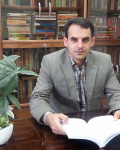| Authors | Keyvan Sharifmoradi, Mostafa Kamali Ardekani, Mohammad Taghi Karimi |
|---|---|
| Journal | Journal of Rehabilitation Sciences and Research |
| Presented by | University of kashan |
| Page number | 53-59 |
| Paper Type | Original Research |
| Published At | 2018 |
| Journal Grade | Scientific - research |
| Journal Type | Electronic |
| Journal Country | Iran, Islamic Republic Of |
| Journal Index | ISC-goole scholar |
Abstract
Background: there is little knowledge explaining how forces applied on knee, hip and L5-S1 joint between the sound and prosthetic leg in unilateral Below-Knee Amputation (BKA), so the aim of this study was to assess the interaction of knee, hip and L5-S1 joint contact forces between sound and prosthetic leg in patients with unilateral BKA during walking
Methods: Five patients with BKA were recruited in this study. A Qualisys motion system capture with seven cameras and a Kistler force plate were used to record kinematics and kinetics variables of walking. The forces applied on knee, hip and L5-S1 joint contact forces (JCF) were calculated by using Open-SIM software. SPSS software was used to analyze data at an alpha set point of 0.05.
Result: The propulsive and second peaks of ground reaction forces applied on sound leg were significantly higher than prosthetic leg (p< 0.05). Although the forces applied on hip, knee and L5-S1 joint in the sound leg were higher compared to prosthetic leg, the interaction between side and joint factor was not significant (p> 0.05).
Conclusion:
The results of this study showed that the meaningful JCF applied on the sound leg were more than that of prosthetic leg. Insignificant increases in JCF on the sound leg during life can create cumulative forces on knee and low-back and endanger these joints at the risk of knee OA and chronic low-back pain. Balanced forces applied on sound and prosthetic leg is important, if this is the case, so indicating using a proper usage of socket pin and prosthetic feet which may have beneficial impact on sound side loads
